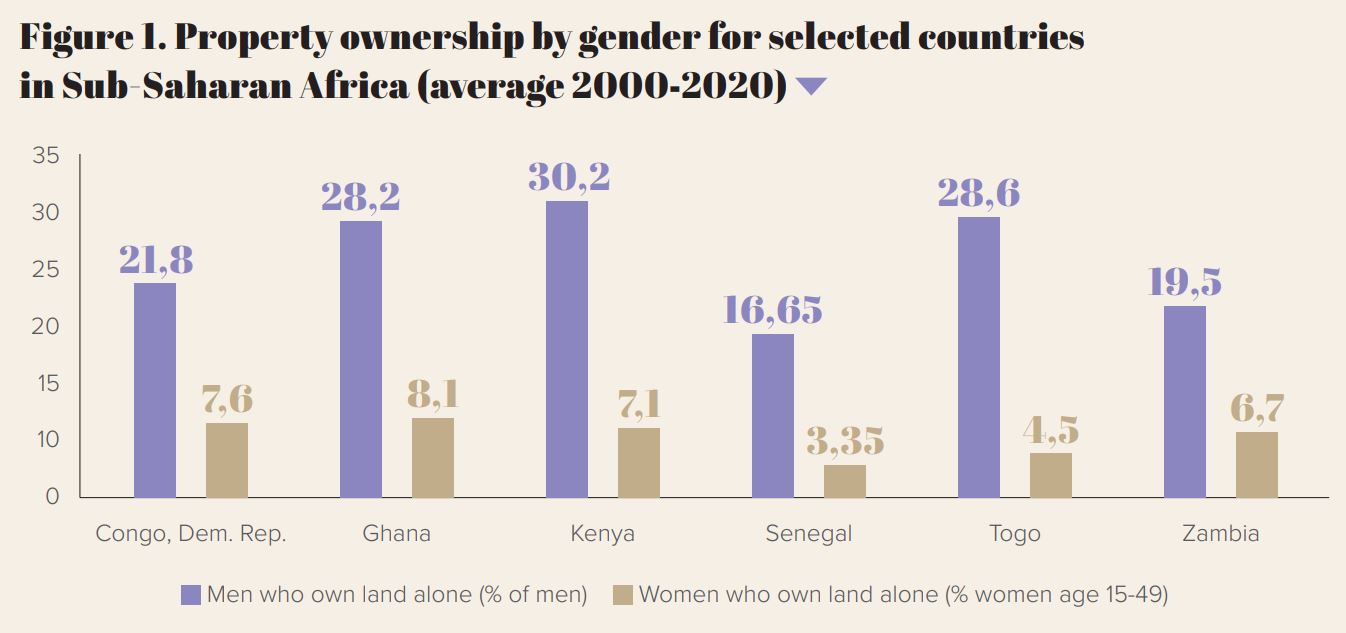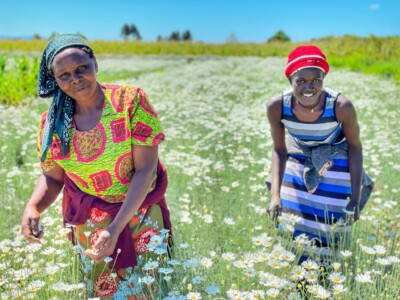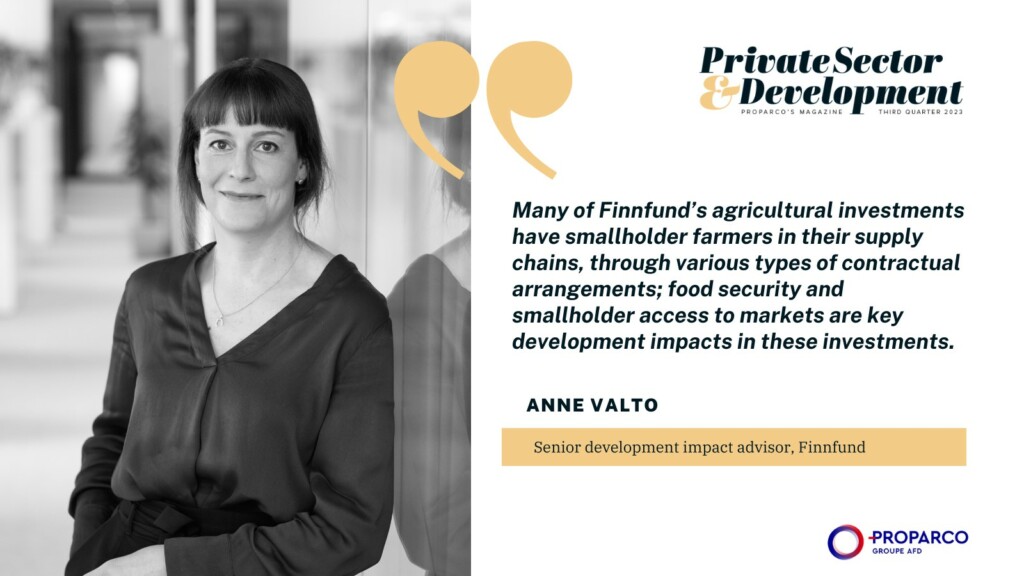November 6, 2023
Placing contract farming in the service of development, food security, and equality
The 2022 Global Report on Food Crises[1] estimates that at least one in five Africans goes to bed hungry, and an estimated 140 million people in Africa face acute food insecurity. The Horn of Africa, in particular, is again suffering from persistent drought, and countries dependent on imported wheat and sunflower oil are suffering as prices have skyrocketed because of the Ukraine war. Gender inequity – with women precluded from contributing – compounds the issues.
Many of Finnfund’s agricultural investments[2] have smallholder farmers[3] in their supply chains, through various types of contractual arrangements; food security and smallholder access to markets are key development impacts in these investments. Generally, smallholder farmers in Africa struggle with limited access to quality inputs, seeds, fertilizers, modern farming methods and access to markets. We want to better understand how agricultural companies typically engage with smallholders: what are the benefits, risks, and obstacles in engaging them; what are the impacts of contract farming[1] on food security. It also wants to assemble best practices to manage and mitigate these. Increased food production does not necessarily imply food security, whereas investment in cash crops for export, potentially decreases food security at the community level. Furthermore, reliance on smallholder suppliers for crop purchases, poses various risks for companies.
What follows are key best practices and ideas obtained from recent academic research. ‘Smallholder integration into commercial value chains through agricultural traders and local food security’, 2022 (with E2 Research).
“Women’s access to productive resources such as land and finance is traditionally more limited compared with men, as is their general decision-making power at the household and community levels.”
Farmer risks and benefits
Smallholder farmers are eager to participate in contract farming as it offers an opportunity for livelihood improvement and the possibility to reduce risk – for example, price fluctuations. One of the major reasons contract farming is increasing in popularity is the spread of food retailing businesses, due to rapid urbanization, requiring a steady flow of high-quality raw materials. This requires vertical coordination between producers and markets. Also, contract farming may also offer farmers access to farming inputs and advisory services. While increased income from contract farming may lead to improved food security and dietary diversity, because households can afford to buy additional items from the market, it does not automatically do so. Households may prioritise other spending, such as on school fees or agricultural inputs, or there may be limited diversity of food in local markets. There is also the tendency to favour contract farmers with larger parcels of land and with access to irrigation. On the risk side, narrowing crop diversity and moving to monocultures can result in a loss of soil fertility and biodiversity, leading to increased exposure to pests and price shocks.
“Contract farming could reinforce the current gendered modes of operations. It may also have negative gendered effects if traditional food crops are displaced by cash crops.”
Gender relations and food security
Women’s access to productive resources such as land and finance is traditionally more limited compared with men, as is their general decision-making power at the household and community levels. On the positive side, contract farming provides the opportunity to empower women, by allowing them to participate, which enables them to attain financial independence and increase their bargaining power within their households. Yet, to succeed, awareness raising is needed. On the contrary, contract farming could reinforce the current gendered modes of operations. It may also have negative gendered effects if traditional food crops are displaced by cash crops.

Figure 1. Property ownership by gender for selected countries in Sub-Saharan Africa (average 2000 – 2020). Source: The Paradox of Gender Equality and Economic Outcomes in Sub-Saharan Africa: The Role of Land Rights (Evelyn Wamboye / Center for Global Development – 2021)
Food security risks and benefits at community level
Changes in local crop production inevitably impact local food security. Not all community members benefit from contract farming, and there is a risk of increasing inequality. Additionally, the availability and diversity of locally acceptable food may decrease when land is allocated for cash crops, and food price fluctuations may increase. Those not participating as contract farmers can also benefit, through increased job availability, infrastructure development and corporate social responsibility activities implemented by companies. Developing farmer organisations may also increase local capacities and social cohesion.
There are a huge variety of contexts for smallholder contract farming; thus there is no panacea that would solve all smallholder partnership challenges. That said, there are important findings in the study that could guide risk mitigation, from both farmer and company perspectives. These include taking into consideration historical and institutional legacies that have shaped local conditions, having professionally managed contractual relations and mutual trust, as well as a market-driven approach.

Smallholders picking pyrethrum flowers in their farm in Nakuru county, Kenya. Photo: Kentegra Biotechnology
CASE: In Kenya, a case embracing the future with gender lens
Kentegra Biotechnology, Kenya, produces a pale, refined extract of the pyrethrum flower, sourced mainly from smallholder farmers. Their farmer partnership model aims to build trust through transparency and fair treatment and has within a year been able to triple the number of contract farmers from some 7 000 to over 20 000. The model’s principles are:
- Transparent farmer screening, selection and introduction to the model.
- Market-driven approach, based on traditional crops and rapid growth in demand.
- Long-term partnership, sustainability and scaling.
- Viability for the company and farmers. Farmers can multiply their income up to 8 times compared to other cash crops they produce.
- Inputs are provided; also soil analysis.
- Farmer training to promote performance and product quality.
- Risk mitigation through drought resistance crops and regenerative farming methods. Pricing and payment mechanisms guarantee prices and prompt payments.
- Managed contractual relations and mutual trust based on a sound contract and Farmer Relations Officers interacting with farmers’ groups.
- Farmers’ interests are addressed in group meetings; the Savings and Credit Cooperative Organisation (SACCO) is one result.
Concerning food security, the model has been a success. Farmers receive a steady, increased income, allowing them to pay school fees and buy additional food. Those with small land parcels – many with 0.5 acres – are able to join. Currently, some 50% of the farmers are women, but the target is 55% by 2027. To safeguard food security at the household level, Kentegra advises farmers to diversify production and retain space to cultivate food crops.

Anne Valto
Senior development impact advisor
Dr Anne Valto is a Senior Development Impact Advisor with Finnfund’s Development Impact team. She has worked in development cooperation and financing for over 20 years. At Finnfund, Anne specialises in the forestry and agricultural sectors, climate change adaptation, biodiversity, and gender issues. She enjoys building bridges and feeding synergies between the public and private sectors, civil society and communities, and understanding the wider impacts of development financing.
This article has been published in Private Sector and Development in October 2023.
[1] Contract farming involves agricultural production being carried out on the basis of an agreement between the buyer and farm producers. Sometimes it involves the buyer specifying the quality required and the price, with the farmer agreeing to deliver at a future date
[1] See https://www.wfp.org/publications/global-report-food-crises-2022
[2] 8.4% of Finnfund’s investments (portfolio and commitments) is in agriculture and food processing
[3] Smallholder farmer definition and e.g. size of their land holdings varies between country contexts, but what is always common is that they use mainly their own labor for farming activities.
